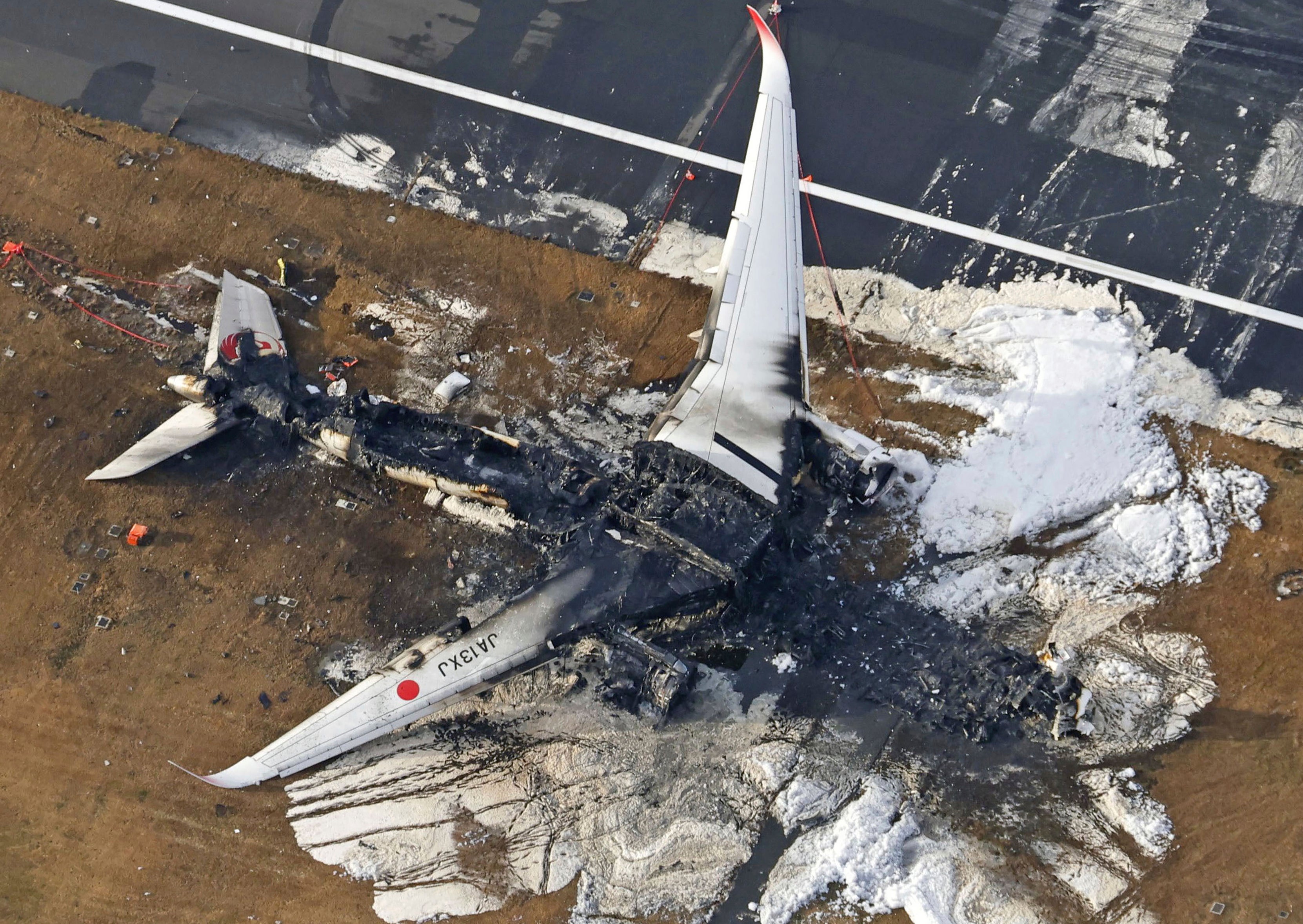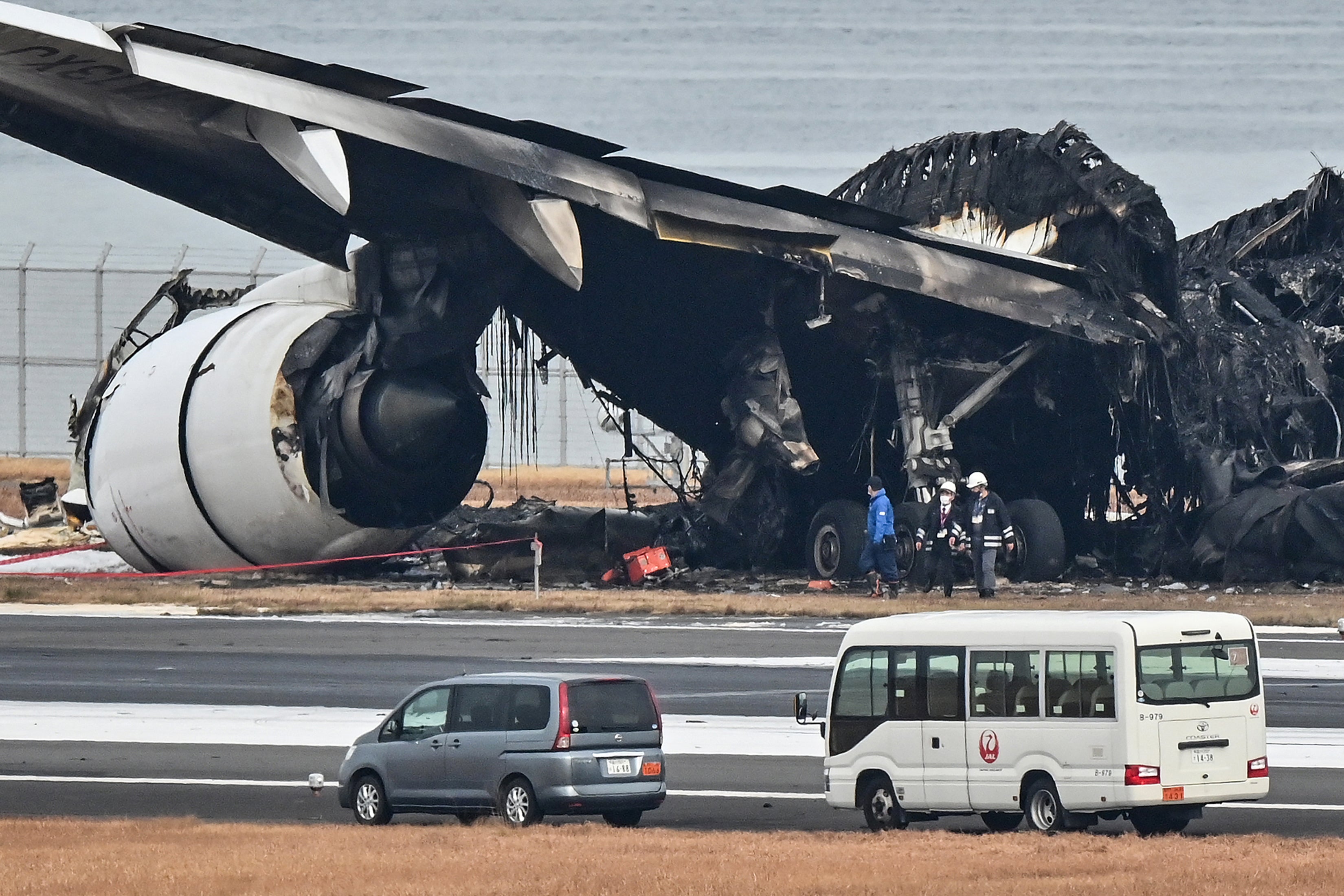Japan Airlines says Tokyo crash will cost it more than $100m
This is first time globally that hull of an A350 model airbus is lost in aviation disaster
Your support helps us to tell the story
From reproductive rights to climate change to Big Tech, The Independent is on the ground when the story is developing. Whether it's investigating the financials of Elon Musk's pro-Trump PAC or producing our latest documentary, 'The A Word', which shines a light on the American women fighting for reproductive rights, we know how important it is to parse out the facts from the messaging.
At such a critical moment in US history, we need reporters on the ground. Your donation allows us to keep sending journalists to speak to both sides of the story.
The Independent is trusted by Americans across the entire political spectrum. And unlike many other quality news outlets, we choose not to lock Americans out of our reporting and analysis with paywalls. We believe quality journalism should be available to everyone, paid for by those who can afford it.
Your support makes all the difference.Japan Airlines said it expected an operating loss of over $100m after one of its aircraft was destroyed in a collision with a Japan Coast Guard plane at Tokyo’s Haneda airport.
The two-year-old Japan Airline airbus A350 was completely charred with only its wings intact after it collided with the Japan Coast Guard plane on Tuesday.
All 379 people on the passenger plane were safely evacuated but five of the six crew members of the smaller plane died.
It was the first time globally that the hull of the A350 model airbus was lost in an aviation disaster, according to Aviation Safety Network. The model is one of the new breeds of aircraft made with cutting-edge materials like carbon fibre-reinforced plastic.
The £79m (15bn yen) loss of the aircraft will be covered by insurance, Japan Airlines said. They were accessing the impact of its earnings forecast for the financial year ending 31 March.
US insurer AIG is believed to be the lead insurer on a $130m "all-risks" policy for the aircraft that was destroyed in the collision, insurance industry sources told Reuters.
Japanese authorities investigating the crash said the smaller coast guard plane was not cleared for takeoff while the Japan Airlines plane was given a green signal for landing at Tokyo’s Haneda airport.

According to the transcripts of air traffic control instructions, the Japan Coast Guard’s Bombardier Dash-8 was told to "taxi to holding point C5" – a part of the airfield’s taxiway system where aircraft wait for permission to enter the active runway.
The transcripts seem to conflict with the account provided by the sole survivor among the six crew members of the coast guard plane who said he received clearance to access the runway that the Japan Airlines airliner was approaching.
The coast guard aircraft was on a rescue and relief mission to the Monday’s earthquake-hit regions.
Dramatic video footage showed the Japan Airlines plane bursting into a fireball and skidding through the runway with hundreds of passengers inside it.

Describing the hellish experience, Anton Deibe, a 17-year-old passenger from Sweden said "the entire cabin was filled with smoke within a few minutes”.
“We threw ourselves down on the floor. Then the emergency doors were opened and we threw ourselves at them.
"The smoke in the cabin stung like hell. It was a hell. We have no idea where we are going so we just run out into the field. It was chaos," the passenger told Swedish newspaper Aftonbladet.

Join our commenting forum
Join thought-provoking conversations, follow other Independent readers and see their replies
Comments